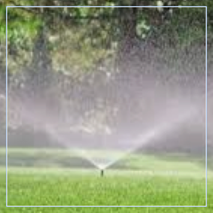 3 TIPS FOR SELECTING AN IRRIGATION PUMP
3 TIPS FOR SELECTING AN IRRIGATION PUMP
Saving time and increasing profitability is essential to a successful irrigation season. Selecting the right pump for the application will help you reduce unnecessary time in the field, allowing you to move on to the next job faster. Conversely, incorrect sizing can negatively affect pumping efficiency, energy consumption and cost, or may even result in the irrigation system not performing at all.
Protect your bottom line with these handy pump sizing and selection tips:
TIP #1 – Know your system’s GPM requirement.
Knowing the Gallons Per Minute (GPM) your system requires is the first step in pump sizing and selection. Refer to the specifications for your sprinkler heads – each sprinkler head requires a specific GPM. Once you know the GPM each sprinkler head requires, multiply that number by the amount of sprinkler heads that are present in your largest sprinkler zone. The product of these two numbers will give you the total GPM your system requires.
TIP #2 – Know the available power source.
The available power source is very important to identify – you will need a pump that can run efficiently off of the power available at the application site, without sustaining damage. Consider: Will your pump be electrical, or gas driven? What voltage and phase do you have available? This information is a necessary step in pump sizing and selection.
TIP #3 – Know your water quality and accessibility.
Knowing your water source is crucial when selecting a pump. Accessibility, proximity to the irrigation system, available pressure or required lift, and water quality are all important considerations in pump sizing and selection. Keep the following in mind:
-
How far away is the water source – long pipe runs may require increased performance to compensate for friction losses.
-
Is the water pressurized – domestic water sources or gravity fed systems may have some incoming pressure to consider.
-
Is the water dirty or filled with debris – filtration can help to avoid damage to the pump and may also create additional friction losses.
-
Is the water source easily accessible – will you need any special fittings, hoses, or valves to access the water?
Save time and avoid frustration and hassle by gathering the info you need in order to select the correct pump for the job.
Need assistance with pump sizing and selection? Contact us at 800.942.4270